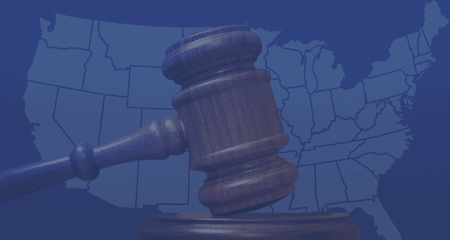How Zoom + Smarsh Helps Financial Firms Maintain Work-from-Home Compliance
This piece was originally featured as a guest post on the Zoom blog.
For companies in financial services, working from home during this crisis while staying compliant can be challenging. Whether it’s a broker-dealer shifting from a traditional office setting, an investment advisor looking to virtually meet with a client, or a bank conducting loan interviews over video and messenger, virtual meetings and communications have become the most viable option.
The Financial Industry Regulatory Authority (FINRA) requires financial firms that intend to communicate through a text messaging app or chat service to first ensure that they can retain records of those communications, as required by SEA Rules 17a-3 and 17a-4 and FINRA Rule 4511. Moreover, FINRA recently released COVID-19 guidance, and it expects firms to maintain monitoring requirements of their employees who are working from home.
Regardless of where work happens, professional electronic communications continue to be reliably archived for monitoring and financial services compliance.
The good news is, there are solutions that work together so financial firms can implement popular messaging solutions and stay compliant, and the Zoom + Smarsh integration is one example.
Why Zoom + Smarsh
Smarsh integrates with Zoom to capture and archive chat messages and files that are sent through chat. This enables firms to communicate using Zoom and be confident they are meeting FINRA compliance requirements — a win-win in a remote working reality.
The Zoom + Smarsh integration helps organizations stay compliant via:
- Comprehensive archiving and search: For companies that enable the integration and must maintain compliance, Smarsh provides archiving support for content generated through meetings, phone calls, and chats on Zoom. Advanced search and display of contextual data make production, supervision, and reconciliation functions more efficient.
- Content audit: Content can be inspected by your compliance teams for sensitive information, suspicious behavior, and/or abusive language. Administrators can review policies that flag keywords across messages and pinpoint violations.
- Export to secure, context-aware archive: Capture and export Zoom communications to the Smarsh Enterprise Archive, an immutable and context-aware content store, or any other archive or ECM solution.
“For businesses like ours, the guidance is clear,” said Danielle Nolan, VP of Marketing at Sentinel Benefits & Financial Group, an employee benefit consulting and administration firm. “We need to be able to retain our communications to meet our regulatory obligations. Zoom helps our remote workforce communicate and collaborate, and Smarsh provides the solution for records retention and oversight. The combination gives us the best of both worlds.”
"We need to be able to retain our communications to meet our regulatory obligations. Zoom helps our remote workforce communicate and collaborate, and Smarsh provides the solution for records retention and oversight. The combination gives us the best of both worlds."
Best practices for working remote & staying compliant
Some additional advice for organizations that need to maintain electronic communications compliance in this work-from-home environment:
1. Plan long term: Having a fully scalable archiving system for all communication channels, including Zoom, is critical. Businesses should consider their obligations and plan for continuity in the current crisis and beyond.
2. Foster a remote-work culture: Working from home is the new normal. Employees will have to develop new habits, keep documentation to meet regulatory obligations, and keep the firm up to speed on what’s happening. Remote working didn’t appear because of the pandemic, nor will it disappear once the virus is contained.
3. Check (and double-check) your systems: It’s not enough to just implement the tools if they are not properly configured. Content needs to be captured and archived to comply with regulatory recordkeeping obligations. Work with your implementation team to test out your processes.
4. Training! It is imperative that employees who are required to comply with monitoring requirements are prepared as well. Compliance training will be key, and they should be equipped with the necessary guidance to foster remote working and stay compliant.
Share this post!
Smarsh Blog
Our internal subject matter experts and our network of external industry experts are featured with insights into the technology and industry trends that affect your electronic communications compliance initiatives. Sign up to benefit from their deep understanding, tips and best practices regarding how your company can manage compliance risk while unlocking the business value of your communications data.





Subscribe to the Smarsh Blog Digest
Subscribe to receive a monthly digest of articles exploring regulatory updates, news, trends and best practices in electronic communications capture and archiving.
Smarsh handles information you submit to Smarsh in accordance with its Privacy Policy. By clicking "submit", you consent to Smarsh processing your information and storing it in accordance with the Privacy Policy and agree to receive communications from Smarsh and its third-party partners regarding products and services that may be of interest to you. You may withdraw your consent at any time by emailing privacy@smarsh.com.
FOLLOW US